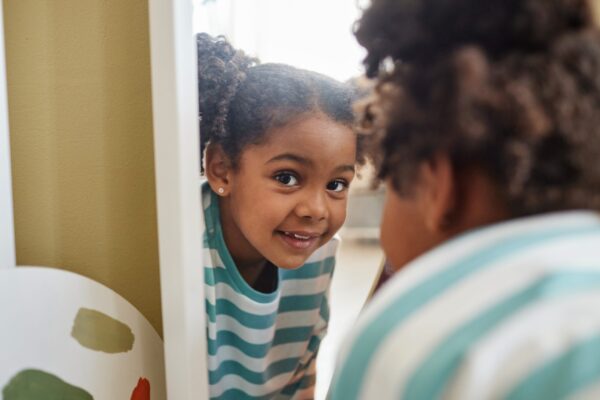When selecting materials for the children in your program, the choices you make shape how the children work, play, explore and learn. Choosing materials that reflect children’s cultures, home languages, and even disabilities promotes respect for diversity. Filling your environment with materials that reflect who they are also creates a sense of belonging and acceptance for children. Additionally, diverse materials can encourage curiosity and discussion, enabling other children to learn more about those around them.
How to Begin
The easiest approach to incorporating your children’s cultures and home languages is to engage with their families for ideas. Family members are one of the most important resources for you and they should be encouraged to share information about their traditions and values.
When determining the best way to incorporate a healthy respect for diversity in your child care setting, think of it from two different perspectives.
Mirrors
Like a mirror, we want our learning environments to reflect the children in our care. Children want to see themselves reflected in their environments. Here are some ideas that can act as a mirror for the children under your care:
- Display family photos with the children displayed to share.
- Provide books, dolls, and pictures that look like the children in your care.
- Incorporate familiar items from the children’s homes that may be unique or a necessity for their comfort.


Windows
We want our environment to be a window that serves as a way for children to learn about what is different or new to them. We want to expand their cultural knowledge and focus on correcting any misconceptions or stereotypes that could be present. This will promote their acceptance for others who are different from them. This can be done by:
- Displaying photos, books, and dolls that do NOT look like the children in your care.
- Labeling items in different languages (even consider braille!).
- Introducing new music, games, or food that are unfamiliar. Think of special guests you can invite to share with the children.
- Inviting families to join together for an event focused on diversity that includes information about different cultures or disabilities. This could be an event that is tied to a “Book and Resource Fair” or midday fun event like a “Lunch and Learn.”
Remember: All children have diverse backgrounds, traditions and abilities. Sharing unique materials with the children in your care promotes understanding and acceptance of the differences within your program.
.

